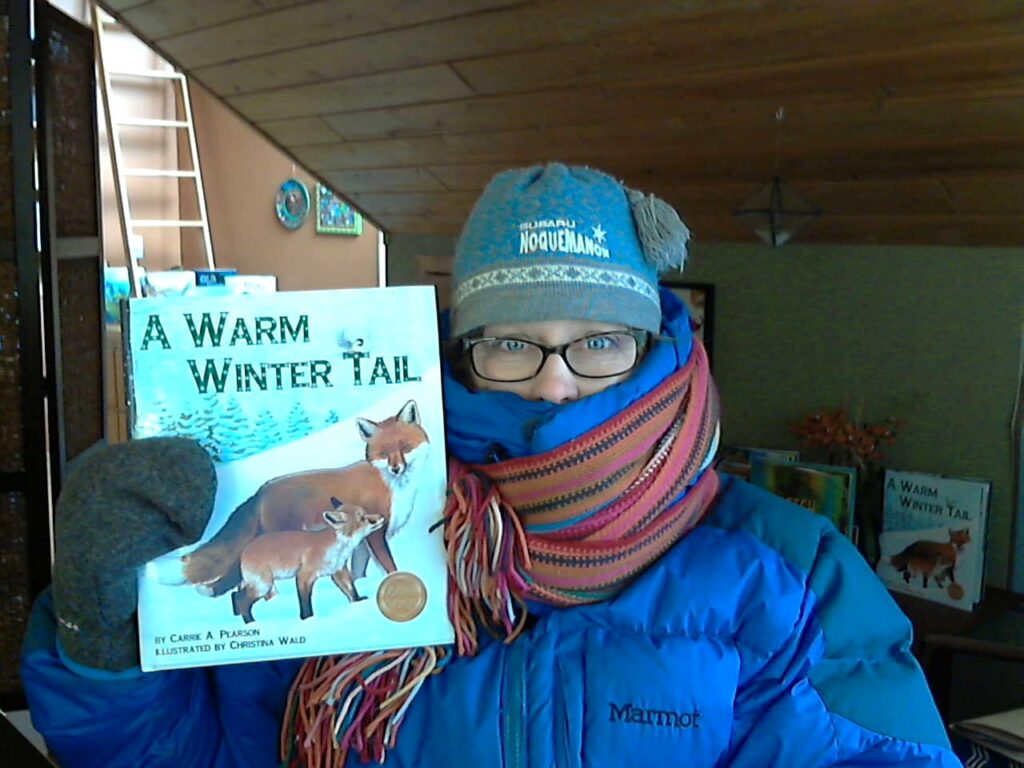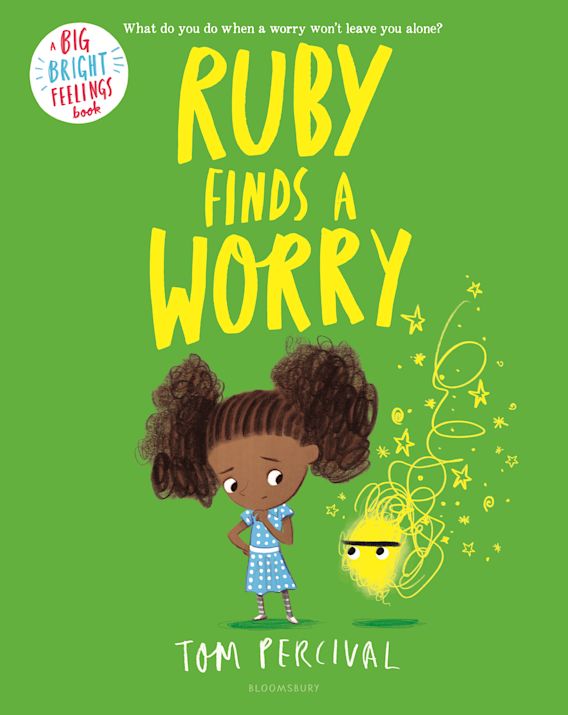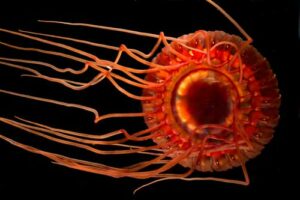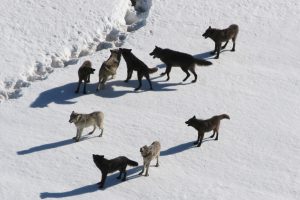GUEST BLOGGER CARRIE PEARSON
As book creators and educators, we know that wonder is an ignitor for inquiry. But I posit that a different “W” can be an igniter, and maybe even a more impactful one: worry*
I live in the Upper Peninsula of Michigan, where winter comes early and lasts six (or more) months. For years after moving here, I worried about all the animals who couldn’t zip on a warmer coat or snuggle up next to a fireplace. Then, I realized if I learned more about animals’ adaptations to cold, maybe I’d quit worrying. It worked! Well, mostly. I still want to bring animals inside during an extended cold snap or a white-out blizzard. But now I understand regional species’ biological strategies for survival.
Good worry builds empathy muscles
My worry ignited research. My research led to writing a science-based manuscript. That manuscript resulted in an informational fiction picture book, A WARM WINTER TAIL (published by Arbordale, illustrated by Christina Wald).
*I don’t want anyone to promote worry – even little children have enough to go around. I am, however, advocating for concern as a spark for STEM inquiry. Concern builds the muscle of empathy, and empathy can encourage students to care about and protect our other-than-human world.
Does it feel risky to foster an educational environment where concerns are allowed to bubble up during discussions? You bet it does. But remember, worry without action is just worry. Worry that is named, acted on, and understood — or even solved with new knowledge — is power.
Good worry in the classroom
Tapping into feelings: Craft and structure
Before reading A WARM WINTER TAIL, explore the front and back cover and discuss how students feel when they look at the image of the mother fox and her kit. What season is it? How do we know? If readers could be part of the setting and touch the foxes’ fur, might it feel warm or cold? How do students feel about being out in the cold? Do they think the foxes might feel the same way? Why or why not? Open a discussion with students. Ask if they ever think about how animals survive outside when it is cold, and they are bundled up inside.
Snowball toss: Key ideas and details
Initiate an interactive read-aloud with A WARM WINTER TAIL. Generate a list of the main questions the text answers. Depending on the student’s age levels, some questions might be:
- How do animals keep warm when it’s cold outside? (PreK-K)
- How are their strategies like humans’, and how are they different? (K-2+)
- Which animals in the book benefit from parental teaching? Explain how you know this. (K-2+)
- Are animals’ body characteristics the same or different from their parents? In what ways? Explain how this might affect their ability to stay warm. (1+)
- What body features help the animals in this book control their body temperatures? (1+)
Write each question on a separate piece of paper. Put students in groups equal to the number of inquiries generated, crumple the papers into snowballs and toss them around the room so each group has one. For independent readers, have each group open their snowball, read the main question, then find one supporting detail from the text that answers the question. Toss the snowballs so each group has a new one and repeat.
One worry, three facts, and a fib: Integration of knowledge and ideas
After exploring A WARM WINTER TAIL as a group, have students write or draw one remaining worry or concern they might have about an animal in the book or about animals in cold weather. Then write three facts they learned from the book about animal adaptations followed by one fib. Have them share their facts and fib with another student. The job of the other student is to figure out which statement is the fib.
What can be done with a worry?
Share the author’s reason (described above) for writing A WARM WINTER TAIL. Invite each student to share one worry with the goal of students contributing their feelings within an emotionally safe space. As a class, brainstorm what kind of information might help to solve or learn about each worry. For example,
- read a book(s) about the topic
- talk about the concern with an expert or someone who knows more about the topic
- tap into other informational sources about the subject (internet, books, interviews with scientists, visiting a science center or other related organization)
- explore habitats or locations related to the topic
Still worried about worry?
Explore Ruby Finds A Worry (Tom Percival, Bloomsbury Children’s Books, 2019)
“Meet Ruby — a happy, curious, imaginative young girl. But one day, she finds something unexpected: a Worry. It’s not such a big Worry, at first. But every day, it grows a little bigger . . . and a little bigger . . . . Until eventually, the Worry is ENORMOUS and is all she can think about. But when Ruby befriends a young boy, she discovers that everyone has worries, and not only that, there’s a great way to get rid of them too . . . she just has to share her feelings. This perceptive and poignant story is the perfect springboard for talking to children about emotions and anxieties.”
Next Generation Science Standards Alignment for A WARM WINTER TAIL
| Grade | Number | Standard |
| 1 | E.ES.01.22 | Describe and compare weather related to the four seasons in terms of temperature, cloud cover, precipitation, and wind. |
| 1 | E.ES.E.2 | Weather changes from day to day and over the seasons. |
| 1 | L.HE.01.11 | Observable Characteristics- Plants and animals share many, but not all, characteristics of their parents. |
| 1 | L.HE.01.11 | Identify characteristics (for example: body coverings, beak shape, number of legs, body parts) that are passed on from parents to young. |
| 1 | L.HE.01.12 | Classify young animals based on characteristics that are passed on from parents (for example: dogs/puppies, cats/kittens, cows/calves, chicken/chicks). |
| 2 | L.HE.02.13 | Identify characteristics of plants (for example: leaf shape, flower type, color, size) that are passed on from parents to young. |
| 2 | L.HE.E.1 | Observable Characteristics- Plants and animals share many, but not all, characteristics of their parents. |
| 3 | L.EV.03.12 | characteristics and functions of observable body parts to the ability of animals to live in their environment (for example: sharp teeth, claws, color, body covers). |
| 3 | L.EV.E.1 | Different kinds of organisms have characteristics that help them to live in different environments. |
| 3 | L.OL.03.32 | Identify and compare structures in animals used for controlling body temperature, support, movement, food-getting, and protection (for example: fur, wings, teeth, claws). |
| 3 | L.OL.E.3 | Organisms have different structures that serve different functions in growth, survival, and reproduction. |
| 5 | L.EV.05.11 | Explain how behavioral characteristics (adaptation, instinct, learning, habit) of animals help them to survive in their environment. |
| 5 | L.EV.05.12 | Describe the physical characteristics (traits) of organisms that help them survive in their environment. |
| 5 | L.HE.05.12 | Distinguish between inherited and acquired traits. |
| 5 | L.HE.M.1 | Inherited and Acquired Traits – The characteristics of organisms are influenced by heredity and environment. For some characteristics, inheritance is more important; for other characteristics, interactions with the environment are more important. |
Carrie A. Pearson (BA, early childhood education, University of Michigan) is a full-time word wrangler and literacy advocate. She is the proud recipient of the 2019 Gwen Frostic Award for Literacy by the Michigan Reading Association. Carrie has served as a Regional Advisor for SCBWI-Michigan for almost a decade. Her “retirement” gig is as a member of the Steering Committee for the new SCBWI Impact & Legacy Fund, created to support the organization’s charitable activities and community purposes. Look for Carrie’s new nonfiction picture book releases in 2023: REAL PRINCESSES CHANGE THE WORLD (Roaring Brook/Macmillan), which is available for preorder now, and VIRGINIA WOULDN’T SLOW DOWN: THE UNSTOPPABLE DR. APGAR AND HER LIFE-SAVING INVENTION (Norton Young Readers/W.W. Norton). Carrie would love to connect with you through her website https://carriepearsonbooks.com/, on Twitter @carrieapearson, and Instagram at carrieapearson.author.











Leave a Reply
Your email is safe with me.